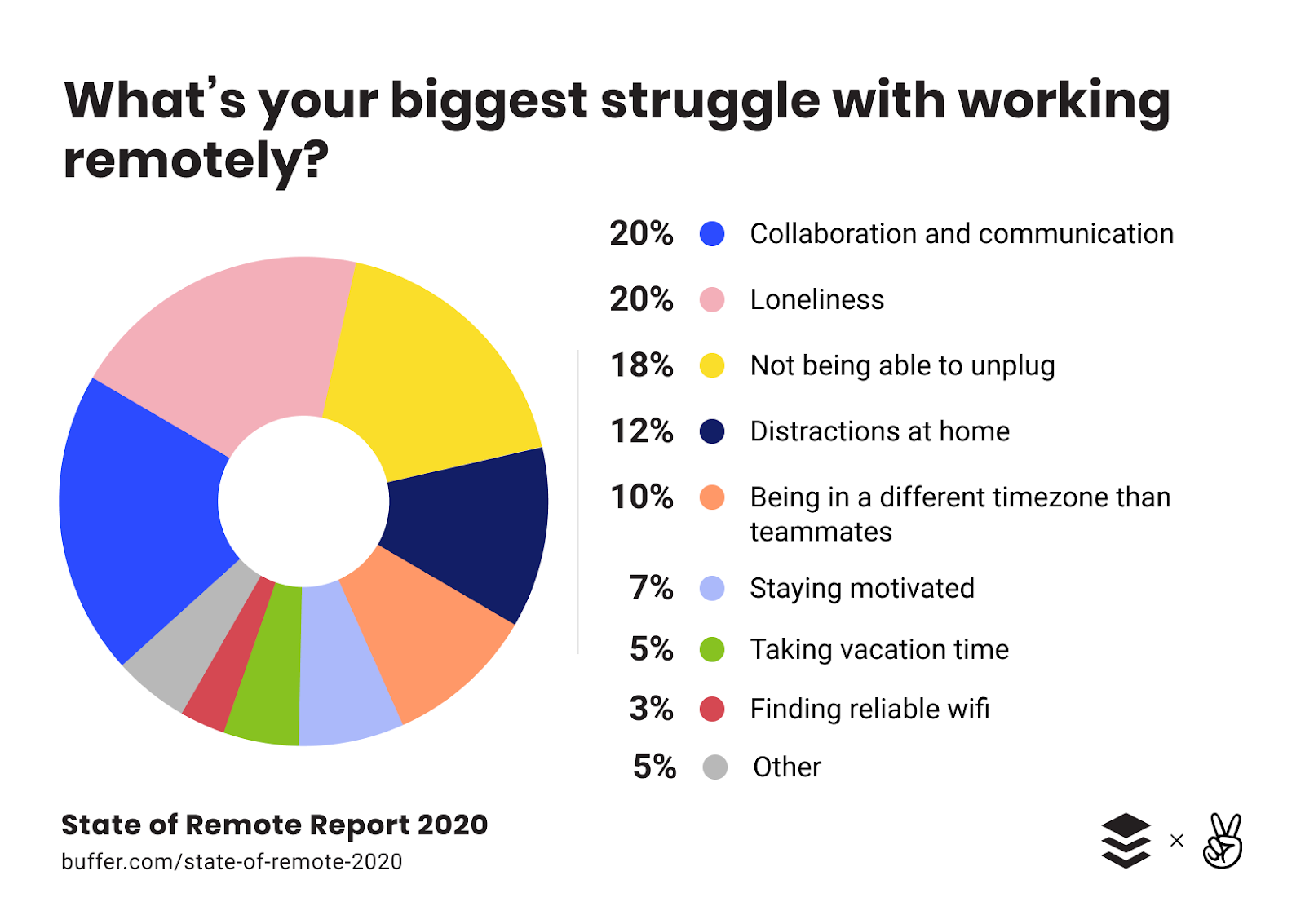Remote Work Is Taking a Toll on Everyone. Here's How to Fix It.
Humans are social animals. How can we navigate the world of remote work when loneliness is inescapable?
Steven Puri
The Social Animal
Loneliness is a common aftereffect of the pandemic. The negative health consequences of social isolation are profound, while loneliness can easily turn into depression over time.
Both social isolation and loneliness are detrimental to health, putting people at an increased risk for heart disease, elevated systolic blood pressure, and depressive symptoms, besides the elevated risk of a variety of mental health issues. They also drive employee burnout and turnover.
In a recent survey by Harvard University's Making Caring Common Project, 31% of respondents reported feelings of loneliness and another 43% of young adults reported increases in loneliness since the pandemic outbreak.
Meanwhile, the State of Remote Work report reported that the biggest challenge remote workers face is loneliness, especially as it pertains to communication and team collaboration.
Bottom line: humans are social animals. Remove us from group environments and we suffer.
Zoom Fatigue
While technology marketers promise that their platforms are designed to bring us together, we're arguably more disconnected than ever.
Though everyone is a phone call or a text away, human beings are social creatures. Social interactions are required.
As Microsoft CEO Satya Nadella says, “digital technology should not be a substitute for human connection.”
Zoom has become the predominant means of communication and coordination among remote workers. While video platforms mimic face-to-face interactions, they’re simply not a replacement for human contact.
There's a reason for this: eye gazing is an essential way that we communicate information. We pick up non-verbal cues from other people's body language, such as gestures and facial expressions. This was an especially important component of our evolution. Tribe members often couldn't communicate via language and so had to assess one another based on pantomimes.
Video calls largely strip us of our ability to read body language. As a result, platforms like Zoom increase our cognitive load. Our brains have to work harder to interpret gestures, leading to increased fatigue and uncertainty.
Add to this constant delays in information—kids popping in and out; doorbells during deliveries; internet issues; navigating an online work environment in the space usually reserved for relaxation and comfort.
The point: digital technology is no substitution for human connection.
University of Notre Dame professor Susan D. Blum breaks it down:
When I see that technological platforms such as Zoom provide some imitations of face-to-face interaction, what I notice the most is that I miss the three-dimensional faces and the bodies and the eyes and the breaths.
How to Curb Loneliness
The pandemic exposed numerous inefficiencies in offices. Employers realized they were needlessly spending large sums of money for space that did not necessarily improve their bottom line. As social scientist Arthur C Clark writes,
Some employers ... have realized that several of the pandemic’s workarounds are cost-efficient, and are considering making them permanent.
Unfortunately, that doesn't solve a bigger issue that Clark addresses: we need one another. True, a lot of remote workers are enjoying the lack of commute time. Clark continues,
Aggravation from commuting is no match for the misery of loneliness, which can lead to depression, substance abuse, sedentary behavior, and relationship damage, among other ills. And it is simply undeniable that remote work usually leads to loneliness.
Some workers will thrive under the work-from-home model. Many others will not, however, and might not have a say in the matter. If their employer decides to make remote work permanent, they're going to have to either, as Clark suggests, try to find another job or learn how to settle into this "new normal."
How then can we prevent the effects of loneliness and social isolation?
While there is no perfect method that works for everyone, our research indicates a number of practices and new habits that can be instituted.
- Spend time with your family and friends.
- Have a healthy relationship with technology. Use social media mindfully.
- Establish a routine. Implementing a structure can help with maintaining a work and life balance.
- Limit the number of Zoom meetings in a day. This frees up time to actually get into a Flow State.
- Regularly take breaks. Maintain both physical and mental activities.
- Practice mindfulness. Connect with yourself. Conscious breathing and meditation help you relax both mind and body.
